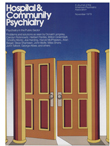Psychiatric Manpower: An Overview
Abstract
There are approximately 25,000 to 30,000 psychiatrists in the United States, some 17,000 of whom are in actual clinical practice. As part of an overview of psychiatric manpower, the authors show the distribution of psychiatrists by state and present population-per-psychiatrist ratios. In discussing the distribution of psychiatrists in various work settings, they note that the decreasing percentages of psychiatrists in community mental health centers may be related to such factors as the large number of non-hospital-based centers, growing antimedical attitudes in centers, and psychiatrists' inclination to work in a setting similar to their training site. They believe that federal and state support should be increased for university-affiliated psychiatric training programs based in settings where psychiatrists are needed: state hospitals, VA hospitals, community mental health centers, and similar facilities. Such an approach would result in the recruitment and retention of greater numbers of psychiatrists in public service settings.
Access content
To read the fulltext, please use one of the options below to sign in or purchase access.- Personal login
- Institutional Login
- Sign in via OpenAthens
- Register for access
-
Please login/register if you wish to pair your device and check access availability.
Not a subscriber?
PsychiatryOnline subscription options offer access to the DSM-5 library, books, journals, CME, and patient resources. This all-in-one virtual library provides psychiatrists and mental health professionals with key resources for diagnosis, treatment, research, and professional development.
Need more help? PsychiatryOnline Customer Service may be reached by emailing [email protected] or by calling 800-368-5777 (in the U.S.) or 703-907-7322 (outside the U.S.).



